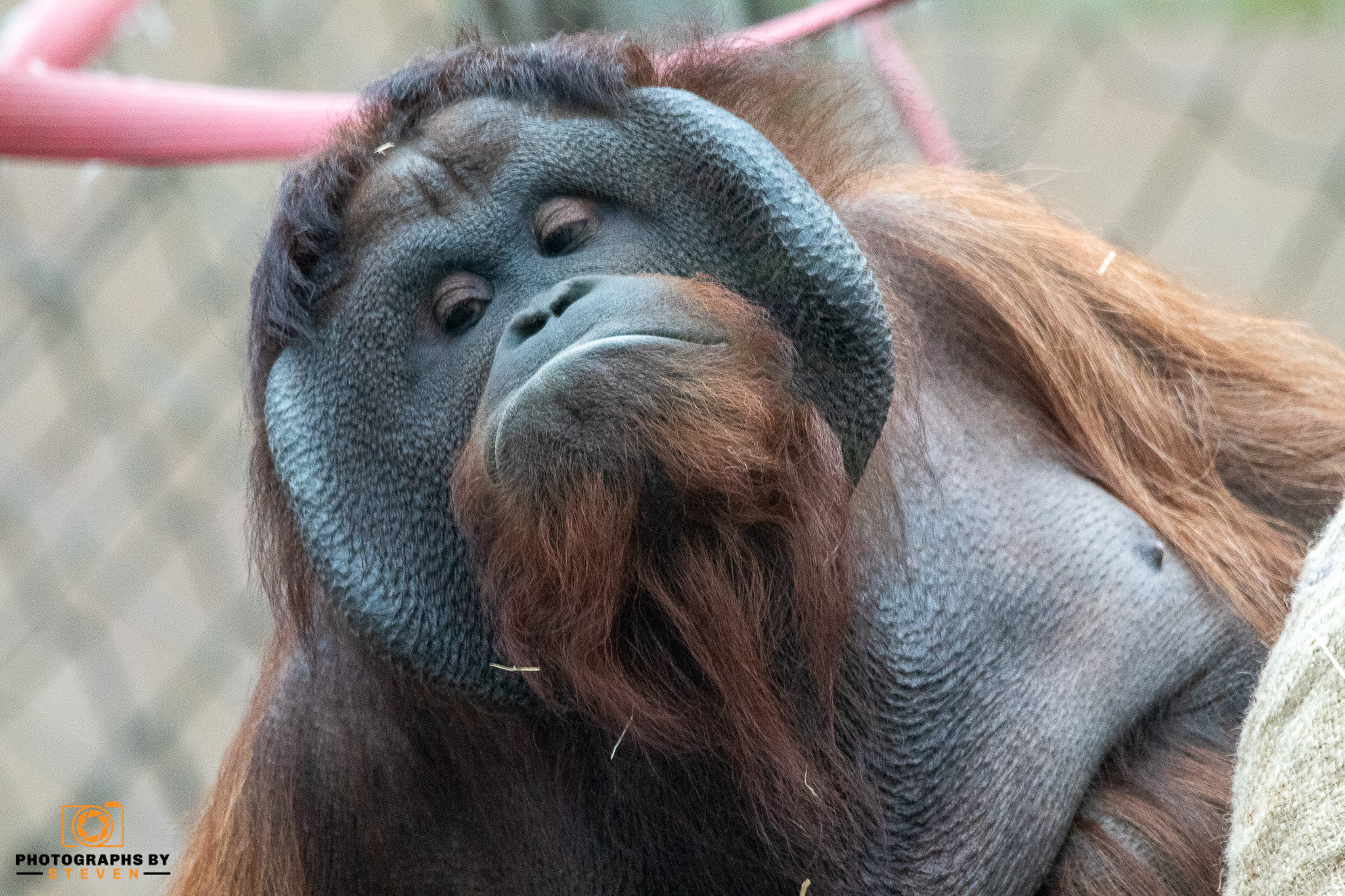Snow leopards have successfully adapted to their challenging surroundings in the high mountains. Their thick fur, which is patterned with dark rosettes and patches (unique to each snow leopard), provides excellent cover for stalking their prey in their rocky habitat.
Their lovely coats are formed of long hairs with a dense, woolly underfur to keep them warm in the winter.
The tails of snow leopards are longer than those of other big cats. They can grow 1 meter long and help leopards balance on steep, rocky terrain. They also give extra insulation against the cold because leopards can wrap them around themselves when resting.
How big is a snow leopard?
Snow leopards are 75-150cm from head to tail base, with the tail adding another 80-105cm, making them smaller than the other large cats. Snow leopards typically weigh between 25 and 55 kilograms, while exceptionally huge males have been observed weighing up to 75 kilograms.
Habitat
Snow leopards can be found in high mountain ranges worldwide, including the Himalayas and Russia's southern Siberian regions. They're also found on the Tibetan Plateau and stretching from China to Central Asia's mountains. They seek rocky outcrops with steep, harsh terrain where prey is scarce. That's why these animals need so much space to roam: male leopards require up to 80 square miles of territory, which is more significant than three Manhattans, while female leopards require up to 48 square miles.
Is it true that snow leopards live in groups?
Adult leopards are solitary creatures who only engage with other leopards during the breeding season. Snow leopard cubs will stay with their moms for at least 18 months, but they may never see each other again once they separate and begin exploring the wide alpine ranges on their own.
What do snow leopards eat?
Snow leopards are carnivores that actively hunt their prey, yet they occasionally consume carrion. Himalayan blue sheep (also known as bharal) are their most common prey, and a single meal will sustain a snow leopard for two weeks.
Snow leopards may also consume Siberian ibex, markhor, Himalayan tahr, argali, deer, horse, and camel. When giant prey is unavailable, snow leopards will take smaller animals such as voles, marmots, and pika.
What do snow leopards use their tails for?
A snow leopard's thick, meter-long tail aids in balance, which is crucial for cresting narrow hills, pursuing prey on challenging terrain, and crossing dangerous crevasses. A sleeping snow leopard can wrap its tail around its body like a scarf for added warmth.
Surprisingly, snow leopard tails are so thick because they use them for fat storage to help them get through lean times.
How high can a snow leopard leap?
These cats can jump up to 15m and take down prey three times their weight. One of our favorite snow leopard statistics is that they can jump 6m vertically, which is high enough to reach the gutter on a typical two-story house.
Is it simple to spot snow leopards?
Woolly, white fur with 12cm-long outside hairs keeps the belly warm while camouflaging on mixed snow and rocky terrain. Snow leopards are also particularly well disguised because of their smoky grey fur with dark rosettes and patches, which allows them to blend in among rocks and scree slopes. Because they are such secretive species, those who live in their range and study them frequently refer to them as "ghosts of the mountains."
It's possible to look directly at a snow leopard from a distance without indicating it's there.
Snow leopards, can they roar?
Snow leopards, unlike most other big cats, are unable to roar due to their unusual, less developed vocal cords. Snow leopards emit various sounds, such as hisses, growls, and mews, similar to domestic cats (just a bit louder).
How do snow leopards move around in heavy snow?
Snow leopard paws are hairy and massive, providing these large cats with built-in snowshoes that distribute their body weight evenly across the snow. The massive paws also aid in muffling their movements and protect their toes from the cold.



Leave me a comment
Thank you for reading my post, if you want to leave a comment, you can do so below.